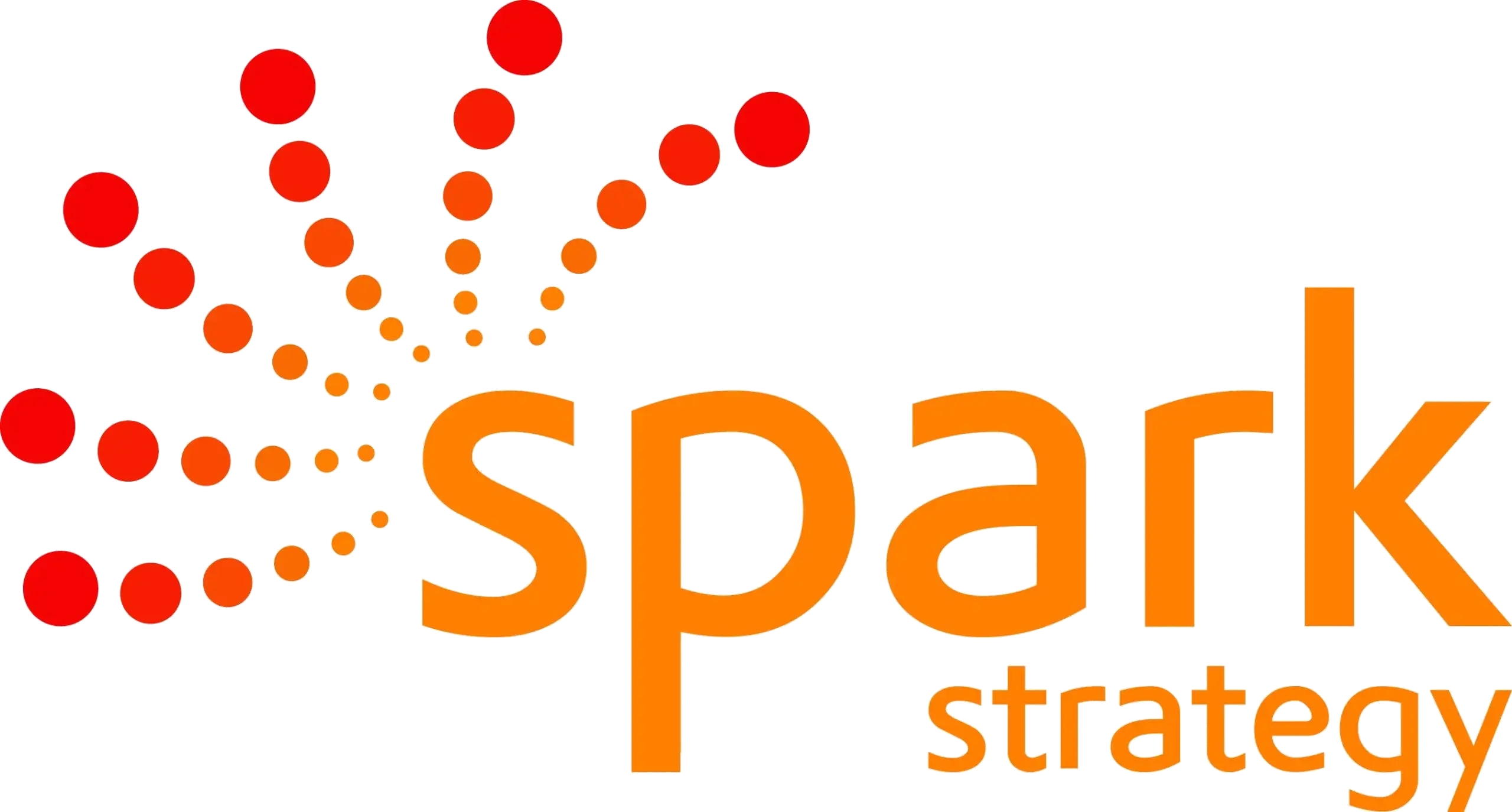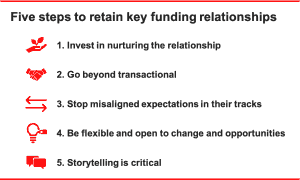Funding plays a central role in the financial sustainability of the for-purpose world. In the seemingly endless search for funding, it can be tempting for not-for-profits to chase new funding streams, while overlooking the opportunity to strengthen their existing funding relationships. This blog is for organisations seeking to effectively nurture and grow funding partnerships that deliver resilient and ongoing revenue streams.
There are some incredible examples of partnerships between funders and for-purpose organisations. A couple of standouts are the Westpac Rescue Helicopter Service, a 40-year old iconic relationship between the bank and the service, and the Early Years Initiative, a Minderoo Foundation collaboration with West Australian Government that’s finding better ways to design and deliver services for children. These are two of numerous examples of how strong cross-sector partnerships benefit individuals, organisations and society as a whole.
However, they are not the full story.
Our experience working with over 250 not-for-profits has demonstrated that many funding partnerships are short-lived, highly transactional and limited in scope. These relationships rarely receive the required regard and attention to nurture long lasting and impactful relationships. We see the greatest success in partnerships that demonstrate strong communication, effective coordination and a shared purpose.
In thinking about what it takes to build and maintain a meaningful partnership, especially those with funders, we have captured our five key learnings below.
#1: Invest in nurturing the relationship
Overall, most not-for-profits we work with recognise the importance of applying for, acquitting and reporting on grants. Accordingly, they tend to invest in these important functions. We also hear that communication and collaboration with peers is vital, with resources applied as such.
Less common is direct investment in nurturing funder relationships throughout the funding period. Does your funder clearly understand how their money is being spent, what progress is being achieved, and the outcomes that are underway? Were shared objectives explicitly stated at the outset, and are they regularly articulated and updated as required? In our experience, best practice is committing up to 10 per cent of funding received directly back into nurturing the funder relationship. This could be invested in impact reporting, direct meetings and other forms of engagement, funding their participation in key project activities, or marketing and promoting the relationship itself.
Spreading relationship management across multiple people in your organisation helps to nurture resilient relationships. This helps to navigate ‘key personnel risk’, where a key point of contact moves on from your organisation, leaving you to start relationship building from scratch.
#2: Go beyond transactional
When it comes to partnerships, it is key to ask ‘what’s in this for me?’. Both parties need to give and receive some value if the collaboration is going to thrive. For many funders, it is about more than charity: they are much more interested in a two-way dialogue that establishes a shared vision for the impact you will create together. This could look like enabling funders to co-deliver your impact, input into the solution design process, or at
the very least, stay updated with your plans and progress. A transaction so often implies a one-off engagement; this mindset changes the behaviour of the people delivering the solution. Go beyond transactional by shifting the word and start sharing early. Let your funder be a partner.
Clearly demonstrating how you will deliver on your funder’s priorities creates a compelling case for the value you will deliver as a partner. We’ve seen many effective funding relationships built on not-for-profits decoding the impact reporting commitments of their corporate supporters, and in turn sharing the impact of their relationship in a way that supports this reporting. The United Nations Sustainable Development Goals (SDGs) are a great framework for aligning value, as they create a universal language to which many funders are aligning their own impact agendas.
#3: Stop misaligned expectations in their tracks
I once heard a government funding representative say, “we asked them to mow the lawn, and they watered the flowers and hung up the laundry… it was lovely, but not what we asked for”. In this scenario, the funding recipient viewed the government grant as a mechanism to drive their own agenda, not a shared outcome. Unsurprisingly, their contract was not renewed.
Although the approach to get there can vary, collective understanding of outcomes is non-negotiable. Ultimately, it is critical to actively engage with a funder about the change they seek, define a common purpose (and revisit it as required) and manage the expectations of your funder.
#4: Be flexible and open to change and opportunities
Nothing is guaranteed. Governments change, corporate priorities shift, and the financial position of individuals and organisations waxes and wanes. Change can pose major risks and generate big opportunities. Our experience indicates that taking a flexible approach to roles, responsibilities and collaboration is beneficial in accommodating changing circumstances, manging risks and capitalising on opportunities.
Having a heads up is a major help; make sure to stay closely connected to your funder so you can anticipate and prepare for changes in advance. These communications ideally go both ways, keeping you informed of funding movements, and your funder in the loop with your organisation’s plans and progress. Meaningful, two-way communication positions you front of mind.
#5: Storytelling is critical
Assessing and demonstrating impact can be the bedrock of a strong and lasting funding relationship. It is about creating a compelling story that connects your funder’s investment to your activities, outputs, outcomes and impact. These insights and stories transparently inform funders (and your own organisation) about what is and isn’t working, and this transparency builds trust in your organisation.
Today’s social and environmental challenges are multifaceted, with many players in the ecosystem, and many interventions occurring at different altitudes. This can complicate the process of evaluating your impact and articulating your role. To unpack this complexity and craft your impact narrative, we recommend combining quantitative and qualitative information, including – where appropriate – the voice and experience of beneficiaries.
At their core, funding partnerships are just like any other. Quality interpersonal relationships, mutual value exchange, a shared vision, transparent two-way communications, and a compelling reason to invest in the relationship are the essential ingredients for a lasting and fruitful partnership. Taking these learnings on board will help you to nurture funding relationships that support the financial sustainability of your organisation and generate meaningful social impact for society.
Are you looking to develop or create stronger and more effective partnerships? Are you thinking about your organisation’s sustainability? Do you need to broker or secure existing or new relationships? Would you like to chat through your partners and current business model? For these or any other questions, please email us at info@sparkstrategy.com.au.


